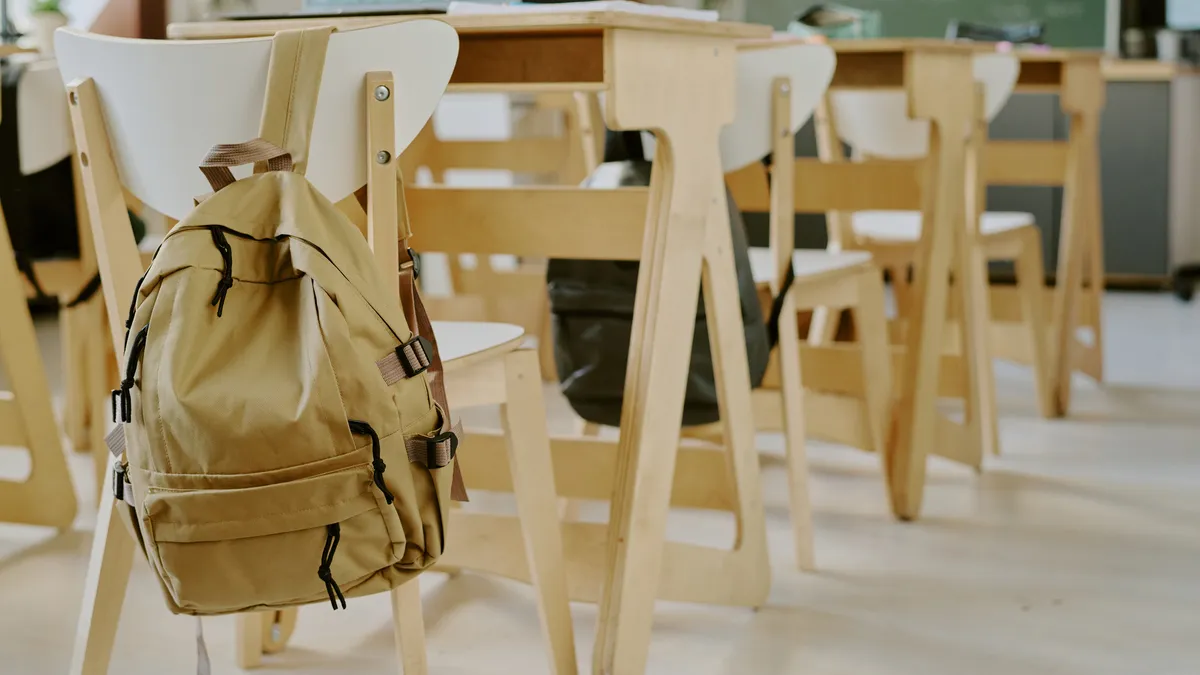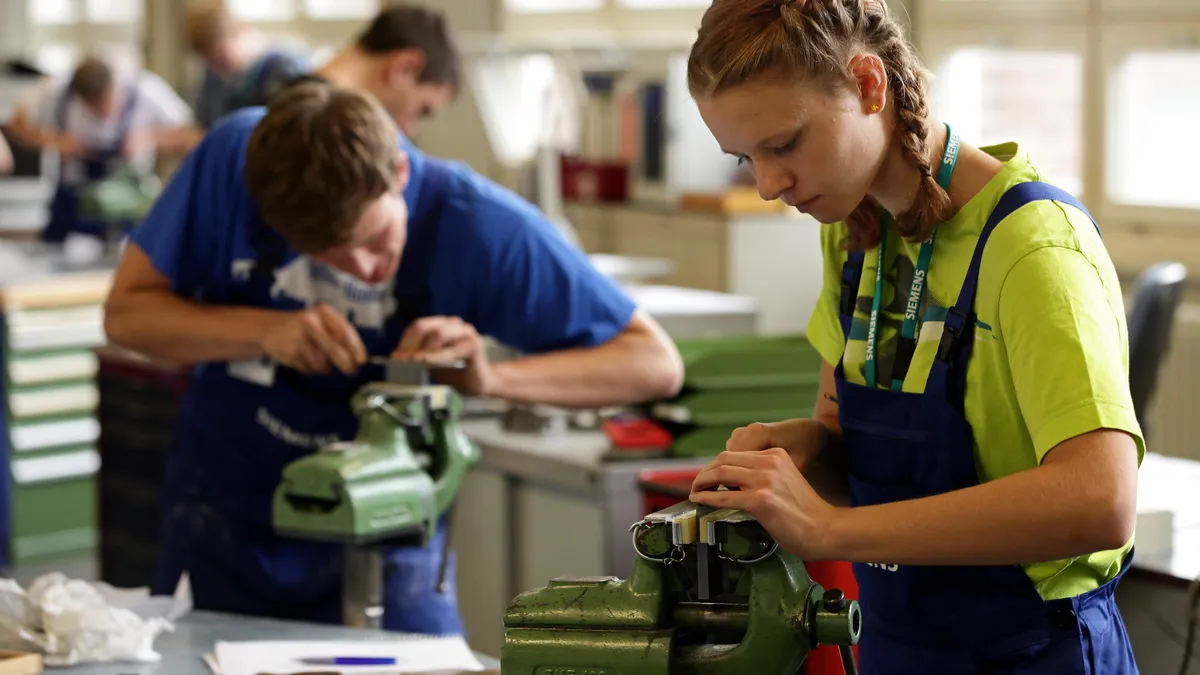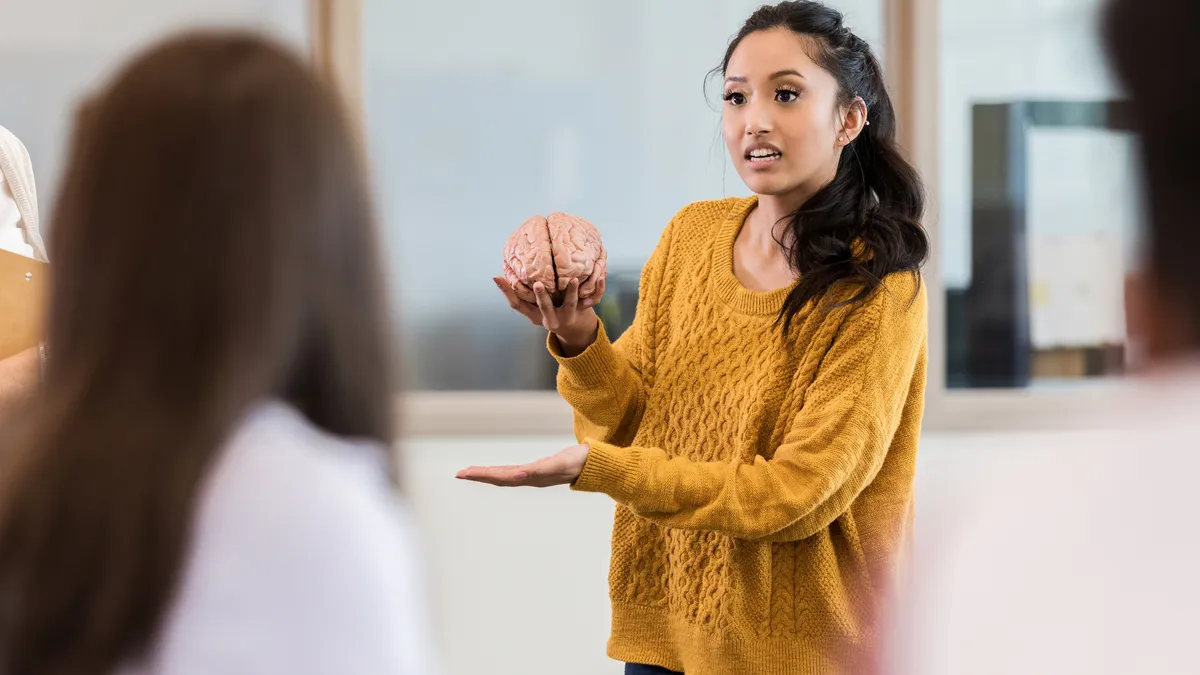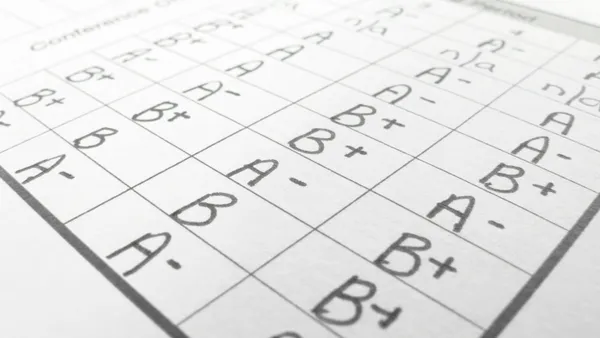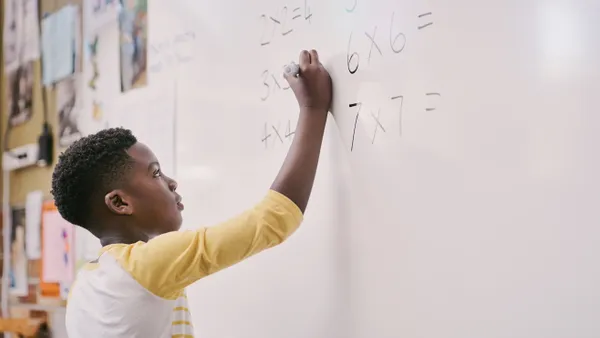After a year of varying degrees of pandemic-induced virtual learning and other disruptions, data are finally beginning to show the degree to which students in districts nationwide may have been impacted.
In Pennsylvania's Parkland School District, located near Allentown, Director of Curriculum, Instruction and Professional Development Kelly Rosario is in the process of unpacking mid-year data for the 2020-21 school year and comparing it to the same period, pre-pandemic, last year. While the top-rated and increasingly diverse district has weathered the storm fairly well, Rosario credits that to strong parent engagement, commitment to teacher-driven professional development and success in closing digital divides early on.
"Are we exactly on pace? Probably not," Rosario said. "But we're within the ballpark our teachers try to stay within."
Over the course of our conversation, Rosario detailed what she's seeing in the data, the importance of breaking silos between departments and more.
Editor's Note: The following interview has been edited for brevity and clarity.
K-12 DIVE: Your district has a "Parkland Ready 21" initiative formalizing the curriculum and technology departments working together. How important is it, especially over the past year, to have the silos between departments like that broken so it's easier for them to collaborate?
KELLY ROSARIO: That's a great question. And we do have a structure here in place where we call it inter-departmental meetings. This was even before COVID that we meet monthly with the curriculum department, the technology department and our student services department, and we all add agenda items and we collaborate. So we’ve had the foundation in place as far as collaborating across departments.
Then obviously last spring and this [school] year, it became even more important. Our technology department believes this as well as we do, obviously, in curriculum. We just actually shared this with the board this little quote that the best 1:1 device in the classroom is a great teacher. It's the teacher, not the technology, and it is the “headware” and “heartware,” not hardware, that makes the difference.
Our teachers are the asset, and the technology should be supporting the curriculum and the instruction. What’s the best use of the technology in the environment we're in and for what we're trying to ensure our students are understanding?
You recently got some new mid-year data on student progress and performance. What are you seeing in that in regard to the past year of COVID-19 disruption?
So, we have really analyzed our English language arts data.
What we did was we looked at data in two different ways. We looked at data and compared mid-year in 2019-20, meaning January of 2020, and then mid-year of 2020-21. Last January, we were still in school. The year was normal at that point, when we collected data at the end of January 2020. So we compared those two years, and then we also compared our hybrid learners and our online learners just from this year.
In elementary, we use two different assessments that are normed assessments — the classroom diagnostic tests for our 3rd-, 4th- and 5th-graders and of Renaissance STAR. It's a universal screener.
We looked at those data, and what we found as a summary is that our students as a whole — of course, this is aggregate data across the district for all kindergartners, all 1st-graders, etc. — is that they're where they should be for mid-year, and it's right in line in comparison with where they were mid-year last year.
We looked at the average cut score in each year. And, you know, in some cases this year’s was a little bit higher in some schools. In other cases, it was just a little bit lower. But [it was] all within the same ballpark. And you're looking at different students.
When you think about last year, the student may have been a 3rd-grader in the 2019-20 school year, and this year they're a 4th-grader. So I realize that, but we just wanted to see in general with the two years, with one half of a year being a normal year, and then this half of the year. What we found is that our schools, our students, as a whole, are at where they should be for this time of year.
Now, do we have some students struggling who we identify in those team meetings? Absolutely. Do we provide intervention? Are we looking at providing some more specific summer targeted interventions for our students? Yes. We know that we have some students struggling with everything. But we are very lucky to have a lot of parental support in our district.
Our parents are helping the students learn at home. I truly believe that. So we found that, for the most part, where we were last year was where we are this year, relatively. Obviously, it's not exact across the board. When we looked at our hybrid and our online learners — and this is elementary right now I'm specifically talking to — they're all, again, about at the same place. Actually, our online learners, if anything, had scored a bit higher.
We accredit that to our parents helping and guiding students along. We do ask our parents not to help on these tests when we assess at home. We do know our parents provide support for our students on those virtual days and if they're all online.
But all in all, the data showed our students are making growth, because we looked at that, too. We looked at the same group that was in 1st grade last year and now they're in 2nd grade, and how much growth did they make altogether as a group? There's growth that is happening. We feel like our students are learning.
Is it an ideal situation for learning this year? Absolutely not. But we are still putting all those things in place that we've done in previous years that are best practice as far as reviewing data, analyzing it, talking about it, providing interventions for kids, calling home — all those things that we've done to keep our students where they need to be.
For secondary, because we eliminated midterms and finals for our secondary schools — and that was an intentional decision — we looked at grades for our middle and high school [students]. We looked at how many As, Bs, Cs, Ds, Fs did students receive last year and then this year. And then we also compared the hybrid and online — and we're doing secondary hybrid different than our elementary. Secondary hybrid is a little bit more concurrent, where students who are online at home can tune into the class via a Google Meet or a Zoom meeting.
In secondary, the difference between hybrid and online — really, there isn't much. The students are performing equally. The percents are pretty close as far as how many As, Bs, Cs, Ds, Fs for hybrid and online.
Just to give you an idea, at our high school last year, we had 48% of students getting an A at the semester mark. This year, we had 49%. What we did notice is that the Ds and Fs were about 10% last year, and we are at about 15% this year. So some more lower grades, but nothing really significant — a couple of percentage points’ difference.
And through our conversations in PLCs (professional learning communities), we know who those students are and are actively looking to help them and be in touch. We have some students who are just not willing to engage — or as in the kid language, they “ghost” and we can not get in touch with them. but we are continually trying, between our counselors and psychologists and principals and teachers, to pull kids back into learning if they've gotten disconnected over the year.
In middle school, for hybrid students or students coming in face-to-face two days a week, 55% are [getting] As. And for our online students, 48% are As. And then our Fs for hybrid are 5%, and 11% for online. So we noticed our online learners in the middle school level might be struggling a little bit more than our hybrid learners.
I would say in summary, all in all, we were pleased with the mid-year data in comparison to last year. Looking at online and hybrid students, we feel like, as a general rule of thumb, our students are growing and learning, knowing that we need to zero in on those students who are not being successful this year, as we have been.
Is there anything in particular the district or schools did over the last year that you would accredit to being beneficial in maintaining that level of performance?
I think we just were flexible. And we looked at our curriculum. We put that together over the summer, but we continually — at the end of the first marking period, we looked at it, we talked with teachers and got feedback and altered it.
And we have all these snow days right now, right? So I imagine we are going to have to look again, if we have to administer the PSSA (Pennsylvania System of School Assessment) in just another month, we have a plan in place to say, “Alright, here's some content we didn't get to because of the year we had prior to PSSA. So in the next few weeks, introduce this.” We're still waiting to get word from Pennsylvania Department of Education. There's things in the works, so we're unsure what PSSA is going to look like at this point. We're kind of holding patient but at the same time making plans in the background to be ready to go once information is solidified.
It looks like it might be at least be pushed back. It looks like it won't happen in March or April like we were originally planning, but we're waiting for confirmation.
With professional development, how important is a peer learning/coaching approach when it comes to opening teachers up to trying new approaches?
We believe wholeheartedly here that we learn best from each other, and it's not one expert up there [delivering PD]. We have a couple of real superstars who do some really creative things and are willing to share.
We also have a system in place here that teachers can propose [what we call] academies. They're after school, and this year they've turned to being virtual academies as opposed to face-to-face.
Those are teacher-run, teacher-proposed. There's a process where I, as the director, approve the proposals, and then we put it out in a catalog for staff and they can register and sign up and attend those academies so the learning continues.
We have a lot of teachers in our district and they're all at different spots of their learning curve, right? Some jumped into that PD really quick last spring and did some crash courses, and others are still learning. We continually run different levels of academies for teachers so we can hit teachers where they are and help them to grow.



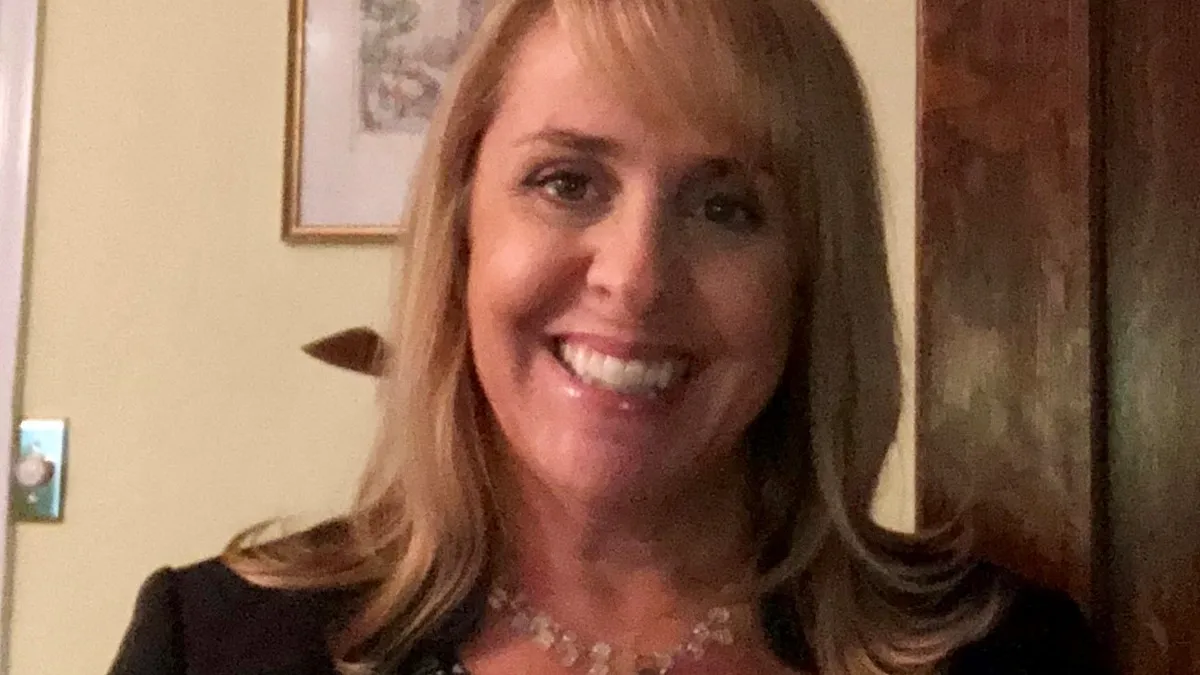




 Dive Awards
Dive Awards




